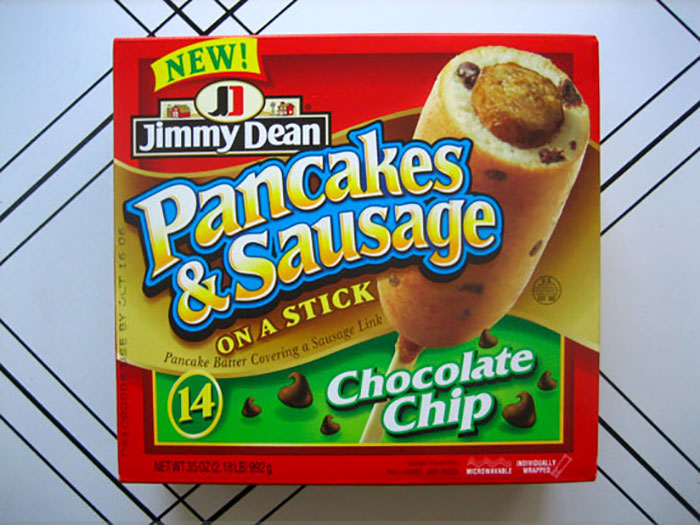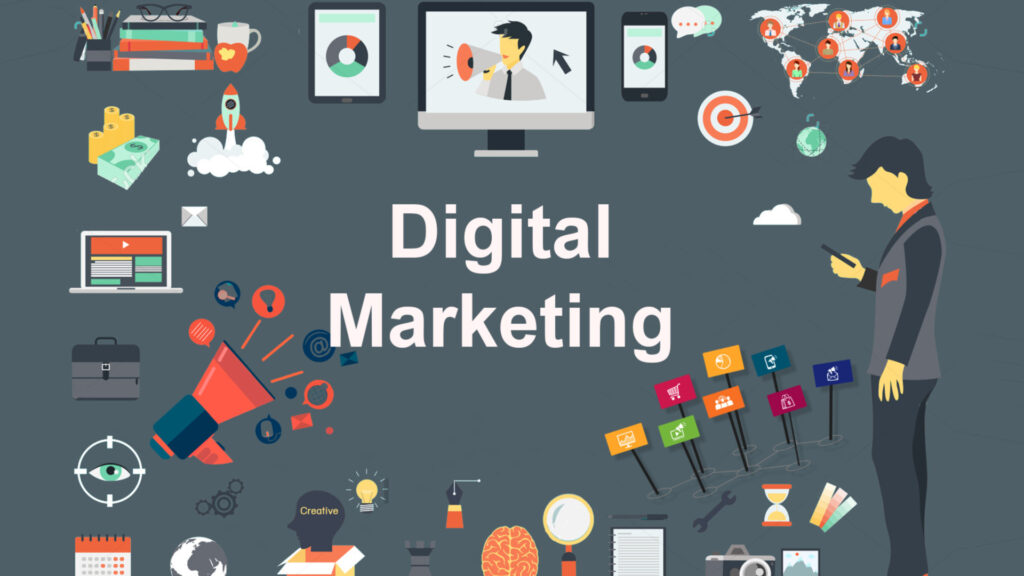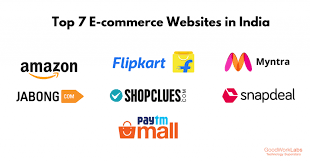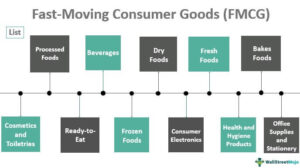How tourist destinations are best test markets for new fmcg products
When, Where, and How to Test Market
The relevance of test marketing to an industry depends essentially on the type of manufacturing process involved. The confectionery industry, for example, can frequently produce sufficient quantities of the new product for test market purposes by minor modifications to existing plants and layouts whereas, in the event of a national launch, an entirely new plant may have to be built, which would necessitate a much heavier investment.

To Test or Not to Test?
Test marketing offers the marketing company two important benefits. First, it provides an opportunity to test a product under typical market conditions in order to obtain a measure of its sales performance.

Second, it provides an opportunity, while the product is on limited sale, for management to identify and correct any weaknesses in either the product or its marketing plan before making the commitment to a national sales launch, by which time it will normally be too late and certainly very expensive—to incorporate product modifications and improvements.

But new products also involve other substantial costs: the advertising expenditure; the amount of sales force time occupied by selling the new product; the goodwill and reputation of the company at the wholesale and retail level; the store shelf space required by the new product; and the production and rework problems that always accompany any new line start-up. If test markets enable large parts of these important costs to be deferred until a reliable estimate of national sales can be made, based on actual experience of the product in the marketplace, then test marketing is desirable.

1. Talk to customers
Test marketing a product is exactly how it sounds.
It is the process of testing the feasibility and success of a new product or service in an isolated area before unveiling the product or service through a full, national, or global launch.
Test markets offer several advantages but also several concerns to think about as a business. Your brand has to determine if it is worth it.
This ultimate guide to test markets will answer all of your questions on test markets and market research.

For more,read more… Jump right to the section you are interested in by clicking on the header!
- What are the greatest advantages of test marketing?
- What are the biggest concerns with test marketing?
- What makes a top test market city or location?
- What are some examples of market research options for test marketing?
- What are a few famous test market failures? Because who doesn’t like reading about Unaccepted products in the market?

Test markets allow businesses to collect data and feedback before a full national launch of a product or service.
2. Test ugly

Growth Engine is a 20-year-old innovation agency that consults on new product creation, testing, and launching. Co-founder Bryan Mattimore has written three books on the subject, including 21 Days to a Big Idea (Diversion Books).
One of the creative ways the company tests new products is to use rough or “ugly” prototypes, says Mattimore. Why? It generates interesting conversations with potential customers.
Mattimore emphasizes the key is to make sure you use an unfinished prototype. If the prototype is too well developed, you won’t get the feedback you need to refine your idea further. “Customers are reluctant to criticize or suggest ways to improve a new product concept if it looks too finished,” he explains. “But they have no trouble telling you what they feel if it seems rough or rudimentary.”
As an added bonus, a rough prototype of your creation is faster and cheaper to produce. This idea is a no-brainer for your early-stage testing.
What are the greatest advantages of test marketing?

The idea of a test market is to measure the success of a new product or service on a smaller scale before instituting a more global launch.
The test market can help a company isolate sales performance, measure goals, run advertising campaigns, and makes sales predictions before the product is fully launched.
It allows for adjustments to be made to the product, service, marketing, or price before launching it on a larger scale to more customers.

3. Offer a sample
Build Your Own Parfait tradition. One week, The Coconut Collaborative hosted the event. Initially it was a way to get the word out in the L.A. market, where they were opening a new production facility. But they also discovered it was a great way to get product feedback.

Seize any opportunity you can to share your product in real-world scenarios that will give you instant feedback.
With any test market, it is important to make the purchasing experience mimic the national launch.
Test markets are an excellent way to identify and correct weaknesses early in a launch. If sales are far below expectations and customers dislike the packaging and price, you can save a lot of money by running a market research project in a test market location.
Losing out in a smaller test market is much less expensive than losing out with a national launch.
Test markets are very popular in the fast-food industry. Have you ever traveled to a new state and had access to order menu items that are not available at home?

In many cases, that brand may be testing out a new product in select locations before the national launch.
If you pay close attention to TV commercials for fast-food, you may even hear the announcer or read a disclaimer that the product is not available in all locations.
What are the biggest concerns with test marketing?

Although test markets create several major advantages for a business, organizations must be educated about the potential negatives as well.
Many of these drawbacks can be mitigated by using an experienced new product development market research company like Drive Research.
With any new product or service launch, it is important to understand the pros and cons of all research options.

4. Use test ads

Before he launched Best Online Traffic School, founder Rodney Yo created a website landing page which contained the startup’s value proposition and a registration form. He then ran a Google Ads campaign to test the acquisition costs while also using heat maps and visitor-recording software.
Taking the registration emails he received from the initial landing page, Yo ran surveys to delve deeper into how the company could improve. Best Online Traffic Schools’ small experiment ended up saving the entrepreneur months of work. According to Yo, “We could launch with a much higher conversion rate from day one.”

Concern 1: Test marketing is costly
Even though you can minimize risk and save tremendous amounts of money if your product flops, testing marketing does not come without significant costs.
These costs could include things like manufacturing, shipping, marketing, distribution, and so on.
Cost is one of the major reasons companies skip test marketing.
Product managers think since the costs are so high to test the market, why not spend a little extra to go in full?

Concern 2: Delays in launch allow competition to step in quicker
A test market sounds like a great idea but what if a competitor finds out and catches wind of your new product development plan?
If your test market plans to run for 3-months, that gives the competition 3-months to create a product and craft a strategy on-the-fly to beat you to market for a national launch.
Why risk it?

Concern 3: Test marketing minimizes risk but does not maximize profits
This ties into my previous point. Maximizing profits in the short-term would come from a successful national launch before the competition can steal market share.
Market research and test marketing absolutely minimizes the risk of failure but maximizes chances of success, but this is often delayed and is a longer-term benefit.

Concern 4: Efficiency in manufacturing
If you are working with a manufacturer to produce 10,000 units for a test market, what would the volume discount look like if you were to produce 100,000 instead?
The cost per unit comes down and it actually saves you money if those units were produced anyway as part of a full launch.

5. Get personal
Create and produce bespoke engraved stationery and invitations for weddings, society families, lawyers, and country clubs. In the beginning, Companies have got ultra creative when to test product. Painstakingly mail out hand-written notes to affluent prospective clients around the world.

Every year, Dulles Designs sends out 1,200 to 2,400 handwritten, calligraphy-addressed notes. “Each message is personal, not about business,” says Dulles. Each handwritten letter serves as a lovely and impressive sample of the company’s calling cards, letterhead, envelopes, and note cards.

The time, effort, and revenue that Dulles Designs has put into creatively sharing its work has produced remarkable results and ROI.
Takeaways
These are just five creative strategies out of a vast number of possibilities at your disposal and most of these approaches are relatively cost effective. You can use these exact approaches, or think of them as a way to get your own ideas brewing.
It’s often nerve-racking to spend money trying to launch a product. You may even need to use financing, such as a business credit card, to fund prototypes and test marketing. But as long as your actions propel your business forward, do it. Test-marketing your product can save you time and money in the long run.

Concern 5: Marketing investment
Think about all the time involved in brainstorming creative, developing messaging, choosing marketing channels, setting up campaigns, and managing advertising campaigns.
Much of this can be scaled with larger geographies. If you are putting all of this time in for an isolated test market effort, does it make more sense to launch it nationally anyway?
What makes a top test market city or location?

Factor 1: Demographics
When choosing a test market city, you’ll want to consider several items.
As you search for a microcosm city you’ll want to find a market that closely resembles your target customers.
Consider factors like ages, incomes, household make-ups, and household tenures. The closer you can match your target market the more accurate your test will be.
In 2016, WalletHub released a study introducing the top microcosm cities across the United States that closely match the country’s demographics as a whole.
This list was topped by:
- Nashville, TN
- Cincinnati, OH
- Indianapolis, IN
- Charleston, SC
- Jacksonville, FL
The study included the examination of over 26 different variables to find the city that most closely matched the nation as a whole.

Factor 2: Media isolation
Isolating media in one market is very important when it comes to test marketing.
New York City does not make a good fit for test markets because their television stations span across the Tri-State area of New York, New Jersey, and Connecticut.
With overlap in markets and media coverage, it is difficult to pinpoint a base for sales or market share.

Factor 3: Affordability
Choosing a smaller city or smaller market for your test market can save your budget.
Exploring a test market in areas like Los Angeles or New York City would get extremely pricey when it comes to running television ads, radio ads, or billboards.
However, running this same campaign in a test market like Syracuse, Buffalo, Rochester, or Albany would prove much more affordable.

What are some examples of market research options for test marketing?
Example 1: Field Study
A field study is live testing of products or services in the consumer market.
This would be Company ABC placing products on the shelves in select stores in the target market.
After a period of time, they would measure sales and perhaps conduct a pre-survey and post-survey before the fielding to understand buyer habits and motivations.

Example 2: Focus Groups
Although unscientific, focus groups are a great pre-test market study.
They can present marketing and advertising concepts to the intended target market customers and get reactions.
The focus groups can also test reactions to the new product or service itself. This type of market research helps set the table for the full test market launch.

Example 3: In-home Usage Tests (iHUTs)
This is another common form of market research. Not familiar with iHUTs as a form of market research? Read more about it here.
In summary, targeted customers are recruited to test a product in their natural environment (e.g. at home).
Then they are sent post-trial surveys about the product, recall of advertisements, and claimed frequency of use.

What are a few famous test market failures?

Failure 1: Heinz Purple Tomato Sause
Test market taste tests gone wrong.
Heinz Purple Tomato Sause tried to upgrade their classic formula to create a different taste. When asking test market participants to take a sip, they loved it.
The problem was: When launched the product based on this feedback and then quickly realized sales dropped immediately.
This market research should have extended further and possibly included some IHUTs where customers would use the entire product or beverage.

Failure 2: Crystal Pepsi
Pepsi didn’t escape failure either.
When Pepsi launched Crystal Pepsi, a clear soda, sales in its test market took off. Soda was flying off the shelves.
After the product was launched nationally, Pepsi quickly found out, it was a product customers wanted to try once but didn’t need to try twice.
Another misread test-marketing project gone wrong.
Again, the company misread the data and did not extend the test market to understand repeated purchases.
Example 3: Colgate Beef Lasagna

Not to pick on , but in the late 1990s, they launched a healthier snack and one that carried significantly less fat and calories than the regular.
Unfortunately the brand identity had unpleasant effects.

After the fall-out, it is important to understand the sustainability of success and product improvements through the test market project.

Marketing companies will only improve their test market strike rate and predictive accuracy when they develop ways of more accurately identifying and recognizing the characteristics of consumer behavior and patterns of consumer expenditure which shape our markets month by month. Marketing knowledge in this area is inadequate.
Thus the need for test marketing in the future will be primarily governed by developments in marketing knowledge and understanding of the mechanics of consumer behavior. The better top management understands its markets, the less frequently will test markets fail, and the sooner it will be able to risk dispensing with test markets altogether.

The ten fastest-growing cities in the world
The fastest-growing cities in the world, according to the UN, are Delhi, Shanghai, Dhaka, Kinshasa, Chongqing, Lahore, Bangalore, Lagos, Cairo and Beijing.

The 10 Largest Cities in the World
Beijing,Newyork -Newark,Cairo,Kinki major metropolitan area (Osaka and Kyoto),Mumbai,São Paulo,Mexico City,Shanghai,Delhi,Tokyo


Microcosm cities’ role as test markets
For consumer marketers, it is a standard practice to test a product in a market area that serves as a microcosm of the type of audience you will be targeting when you scale the product nationally. In theory, that enables the marketer to see if the product and approach to marketing it works without going to the expense of introducing the product nationally. So, the theory goes, if you have a consumer product intended for a national market one day, test it first in a market that is a microcosm of the nation as a whole.
What American cities are most like the entire country?
In trying to determine which of the largest 366 U.S. metropolitan areas serve as the best (or worst) microcosms of the entire country, the price-comparison website WalletHub.com examined 26 key metrics, including factors like age, gender and income as well as household makeup and housing tenure.
According to their research, here is a listing of the top 25 cities where you’ll find a local population that reflects the characteristics of the nation as a whole. In other words, if you have a product intended for a mass audience one day, these are good places to start testing it in a “micro” sort of way:
- Nashville, TN
- Cincinnati, OH
- Indianapolis, IN
- Charleston, SC
- Jacksonville, FL
- Greenville, SC
- Oklahoma, OK
- Phoenix, AZ
- Albuquerque, NM
- Winston, NC
- Birmingham, AL
- Greensboro, NC
- Orlando, FL
- Charlotte, NC
- Columbus, OH
- Louisville/Jefferson County, KY
- Lexington, KY
- Tulsa, OK
- Baton Rouge, LA
- Columbia, SC
- St. Louis, MO
- New Orleans, LA
- Kansas City, MO
- Tucson, AZ
- Little Rock, AR
The list obviously includes a large number of cities in China and India, but there are large metropolises all over the continent, even in less populated areas, such as the Arabian Peninsula; none in Asian part of Russia.
| City | Urban aggl. | Population | Urban area | Country | Other cities in urban area |
| Tokyo | 39,105,000 | 9,630,000 | 8,231 Km² | Japan | Yokohama, Kawasaki, Saitama, Chiba |
| Jakarta | 35,362,000 | 10,562,000 | 3,541 Km² | Indonesia | Bekasi, Tangerang, Depok, Tangerang Selatan, Bogor |
| Delhi | 31,870,000 | 11,035,000 | 2,233 Km² | India | Ghaziabad, Faridabad, Gurgaon, Noida |
| Manila | 23,971,000 | 1,780,000 | 1,873 Km² | Philippines | Quezon City, Caloocan, Taguig |
| Seoul | 22,394,000 | 10,011,000 | 2,769 Km² | South Korea | Incheon, Suwon, Goyang, Yongin |
| Mumbai | 22,186,000 | 12,442,000 | 1,008 Km² | India | Vasai-Virar, Bhiwandi |
| Shanghai | 22,118,000 | 22,118,000 | 4,069 Km² | China | |
| Guangzhou | 21,489,000 | 12,874,000 | 4,341 Km² | China | Foshan |
| Beijing | 19,437,000 | 19,437,000 | 4,172 Km² | China | |
| Kolkata | 18,698,000 | 4,497,000 | 1,352 Km² | India | |
| Bangkok | 17,573,000 | 5,588,000 | 3,199 Km² | Thailand | Nonthaburi, Pak Kret |
| Dhaka | 16,839,000 | 6,970,000 | 456 Km² | Bangladesh | Gazipur, Narayanganj |
| Osaka | 15,490,000 | 2,725,000 | 3,020 Km² | Japan | Kobe, Kyoto, Sakai, Himeji |
| Istanbul | 15,311,000 | 15,311,000 | 1,375 Km² | Turkey | |
| Karachi | 15,292,000 | 15,292,000 | 1,044 Km² | Pakistan | |
| Shenzhen | 14,678,000 | 12,994,000 | 1,803 Km² | China | |
| Bangalore | 13,999,000 | 8,495,000 | 1,204 Km² | India | |
| Ho Chi Minh City | 13,954,000 | 7,005,000 | 1,637 Km² | Vietnam | Bien Hoa |
| Tehran | 13,819,000 | 8,694,000 | 1,704 Km² | Iran | Karaj |
| Chengdu | 11,920,000 | 9,177,000 | 1,829 Km² | China | |
| Chennai | 11,564,000 | 4,647,000 | 1,085 Km² | India | |
| Lahore | 11,148,000 | 11,148,000 | 852 Km² | Pakistan | |
| Tianjin | 10,932,000 | 10,932,000 | 2,813 Km² | China | |
| Hyderabad | 9,840,000 | 6,993,000 | 1,274 Km² | India | |
| Wuhan | 9,729,000 | 8,897,000 | 1,722 Km² | China | |
| Nagoya | 9,522,000 | 2,320,000 | 3,704 Km² | Japan | Toyota, Gifu, Okazaki, Ichinomiya |
| Taipei | 9,078,000 | 2,563,000 | 1,059 Km² | Taiwan | New Taipei, Taoyuan |
| Kuala Lumpur | 8,639,000 | 1,790,000 | 2,163 Km² | Malaysia | Subang Jaya, Klang, Shah Alam, Petaling Jaya |
| Chongqing | 8,261,000 | 7,920,000 | 1,536 Km² | China | |
| Dongguan | 8,142,000 | 7,639,000 | 1,759 Km² | China | |
| Pune | 7,948,000 | 3,124,000 | 650 Km² | India | |
| Nanjing | 7,729,000 | 6,500,000 | 1,614 Km² | China | |
| Ahmedabad | 7,717,000 | 5,634,000 | 360 Km² | India | |
| Zhengzhou | 7,479,000 | 4,459,000 | 1,790 Km² | China | |
| Hanoi | 7,375,000 | 3,605,000 | 963 Km² | Vietnam | |
| Hong Kong | 7,345,000 | 7,345,000 | 291 Km² | China | |
| Shenyang | 7,208,000 | 5,718,000 | 1,515 Km² | China | Fushun |
| Xi’an | 7,090,000 | 5,403,000 | 1,093 Km² | China | |
| Bandung | 6,932,000 | 2,575,000 | 487 Km² | Indonesia | Cimahi |
| Riyadh | 6,889,000 | 6,889,000 | 1,673 Km² | Saudi Arabia | |
| Hangzhou | 6,713,000 | 6,713,000 | 1,445 Km² | China | |
| Quanzhou | 6,662,000 | 1,330,000 | 2,090 Km² | China | Jinjiang, Nan’an, Shishi |
| Dubai | 6,595,000 | 3,411,000 | 1,507 Km² | United Arab Emirates | Sharjah, Ajman |
| Yangon | 6,497,000 | 4,729,000 | 603 Km² | Myanmar | |
| Surabaya | 6,494,000 | 2,765,000 | 912 Km² | Indonesia | |
| Qingdao | 6,232,000 | 5,500,000 | 1,655 Km² | China | |
| Baghdad | 6,107,000 | 6,107,000 | 694 Km² | Iraq | |
| Singapore | 5,686,000 | 5,686,000 | 523 Km² | Singapore | |
| Suzhou | 5,103,000 | 4,540,000 | 1,386 Km² | China | |
| Kabul | 5,062,000 | 4,435,000 | 272 Km² | Afghanistan | |
| Ankara | 5,036,000 | 5,036,000 | 671 Km² | Turkey |
* data on urban agglomerations updated to 2021 (estimates), those on population according to official data or more recent estimates of the national statistical services, when different from urban agglomerations.

Role of Testing and Tracking in Internet Marketing

Aside from content creation, testing and tracking are among the most important responsibilities of Internet marketing professionals. Marketers should be constantly testing, analyzing and adjusting their marketing programs to determine which strategies are performing well. Knowing which web pages are leading to sales and which aren’t can allow marketers to pinpoint areas of success and use those methods elsewhere throughout their online efforts.
Below are five high-level aspects of Internet marketing that should always be tested.
Choose a few variations of subject lines, messages and offers in different email blasts and run a simple A/B test on small sections of the audience. Whichever subject, content and offers perform better can be sent to the remaining audience members to help verify effectiveness.
Social Media

Test different types of social media posts, such as questions, links to content, images or polls to see which type of post receives the best response. It also helps to pay attention to how users respond on each individual social platform.

If the Facebook fan base prefers to engage with different topics than Twitter followers, the two should receive varying content. Finally, test posts at various times of the day, and days of the week, to see which leads to more page views and comments.
Business Blogging
In addition to testing various headlines, include a call-to-action (CTA) in each post. This could be a request for comments or link to a sales page or lead form. Test the wording of CTAs to see which phrases perform best.
Search Engine Optimization (SEO)

Keyword testing is significant to SEO. Note which keywords are most pertinent to your brand and test variations of them when optimizing website content. Local businesses should also include variations of their geographic region.
Website and Landing Pages

Test the performance of different offers, messages and CTAs on these pages and note which options generate greater user response. For landing pages, also test different content and try varying the lengths of your lead forms.
Monitoring key performance indicators (KPI) will help Internet marketers gauge their progress toward marketing, sales and customer service goals. A KPI is quantifiable data used to measure performance relative to a goal. For example, if a marketer aims to increase website traffic by 40% over the course of a year, the main KPI would be the number of visitors their website receives in a day. The marketer will also want to know whether those were unique or repeat visitors, where they come from, how long they stayed on the site and whether they filled out a lead form or made any purchases.

In addition to visitor statistics, marketers should measure incoming links and their anchor text. Link measurements will reveal who is linking to the webpage and why, and which links are performing well. Also, experimenting with different website headlines will help reveal which attract readers and keep them on the page.
Of course, the ultimate goal of Internet marketing is to drive profitability. Successful and knowledgeable Internet marketers will know how each individual online business effort relates to profitability and return on investment.
Tail Piece. Dig deep…The devil lies in the detail

Top most festival Products FMCG consumers search today
World Wide Festive Trends Decoded What Indian festive consumers seek...
Read MoreHow right selection of FMCG Salesmen improves brand market share
How can FMCG Companies improve salesman’s technique in order to...
Read MoreHow most searched Fmcg sales and marketing words help newbie salesman
Why undestand FMCG sales management? Sales management is the process...
Read MoreHow Successful FMCG Salesman Starts his Day, a guide
How does one become a good sales executive in the...
Read More








Pingback: Who did Digital Deepak marry on 19th July 2021? How Digital Deepak and Fmcg products are similar?
Pingback: All Time Kitchen Tools Guide and Chef's Language Dictionary
Pingback: Drink Komin Nature Crafted Alkaline Water For A Healthy Life
Pingback: Hospitality Industry Terminology, Hotel Definitions & Jargon
Pingback: Health and Life Insurance Pays when There is A Loss of Asset
Pingback: Beyond Covid Endemic, a new way beckons Fmcg consumer goods